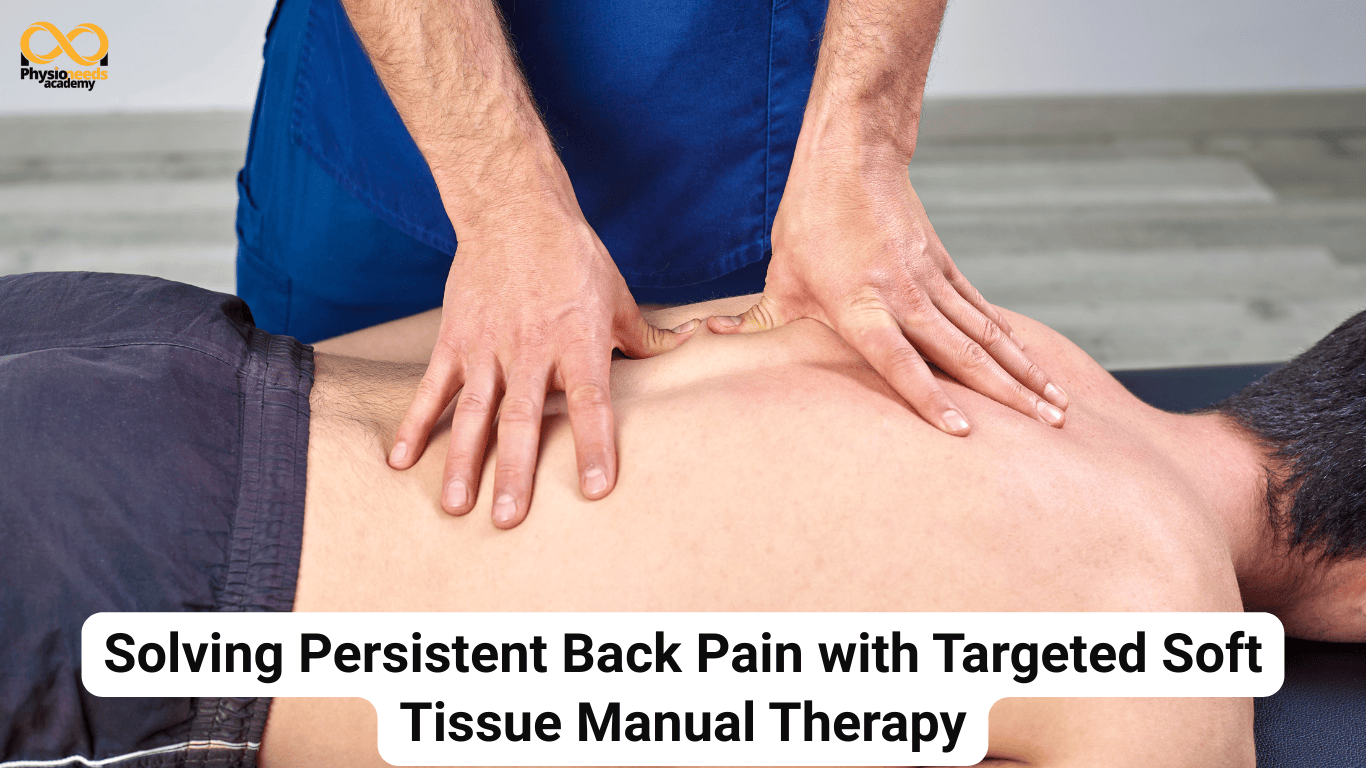There are no items in your cart
Add More
Add More
| Item Details | Price | ||
|---|---|---|---|

Back pain is one of the most common health challenges worldwide, affecting people across all age groups and professions. Whether you’re an office worker sitting long hours, a student with poor posture, or an athlete recovering from injuries, back pain can disrupt your daily life.
While painkillers and short-term fixes may provide relief, they rarely solve the root problem. That’s where targeted soft tissue manual therapy for back pain comes in. This non-invasive treatment works by addressing tight muscles, restricted fascia, and dysfunctional soft tissues to restore natural movement and reduce pain.
In this blog, we’ll explore how manual therapy for back pain works, the techniques used, its benefits, and why it may be the missing solution for persistent back pain treatment.
When back pain lasts for weeks, months, or even years, it’s classified as persistent or chronic back pain. Unlike acute pain caused by a sudden injury, persistent pain is often linked to:
Soft tissue manual therapy is a hands-on physiotherapy technique that treats muscles, tendons, ligaments, and fascia. Unlike general massage, targeted manual therapy focuses on problem areas identified through professional assessment. The main goals include:
A physiotherapist may combine several techniques to provide tailored treatment:
The advantages of this manual therapy treatment for back pain go beyond temporary comfort:
Targeted soft tissue manual therapy can help:
During a session, a physiotherapist will:
To make the most of therapy, it’s important to support it with lifestyle adjustments:
Persistent back pain doesn’t have to hold you back from living your life fully. With targeted soft tissue manual therapy, you can experience real, long-term relief. By releasing tight muscles, restoring mobility, and improving posture, this therapy addresses the root cause of back pain instead of just masking it.
If you’re struggling with chronic discomfort, consulting a physiotherapist trained in manual therapy techniques may be your first step toward a pain-free, healthier future.
1. How does soft tissue manual therapy work for back pain?
It reduces muscle tension, improves circulation, and restores mobility, addressing both pain and its underlying causes.
2. Is manual therapy effective for chronic back pain?
Yes. Studies and clinical practice show that manual therapy for chronic back pain provides long-term relief when combined with exercise and lifestyle changes.
3. How many sessions are needed for results?
Many patients feel improvement after 1–2 sessions, but persistent back pain may require multiple treatments for lasting results.
4. Can manual therapy replace medical treatment?
It complements medical care but should not replace it. Always consult your doctor if you experience severe or unexplained back pain.
5. What’s the difference between massage and targeted manual therapy?
Massage focuses on relaxation, while targeted manual therapy for back pain is clinical, goal-oriented, and tailored to specific dysfunctions.